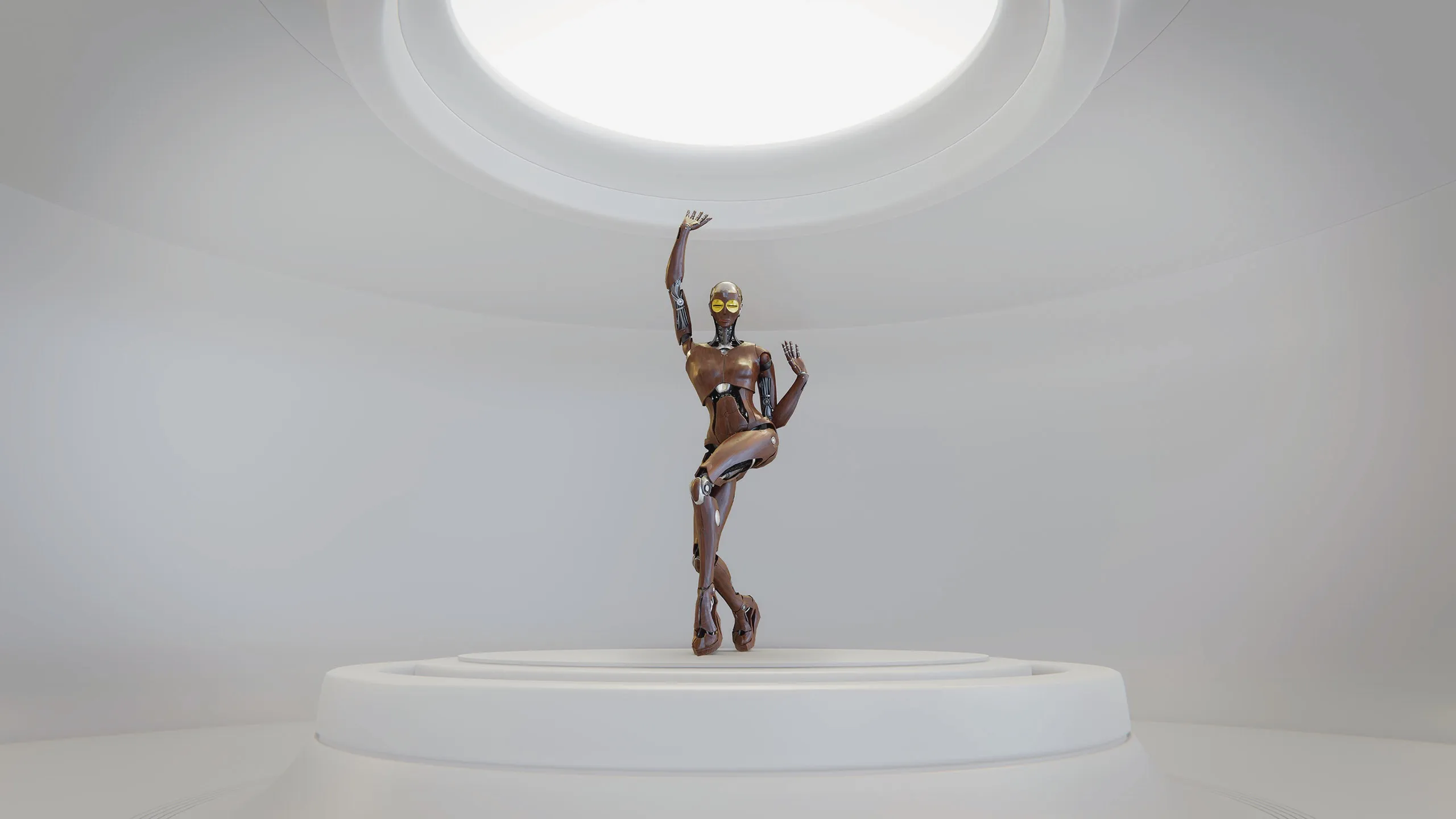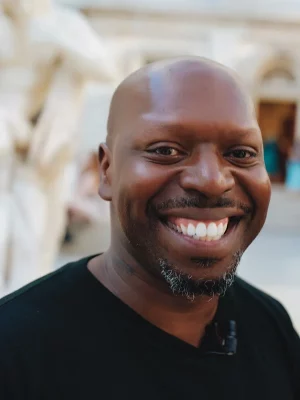
Interactive AI Storyteller “Being” Leads Decolonization Workshop at Sundance 2024
Sundance
For Dr. Rashaad Newsome, the idea to create a machine learning model in the form of an Afro-futurist cyborg stemmed from a simple thought: “What would happen if you made an artwork that could not only start a conversation but also participate in it?”

Dr. Newsome trained the artificial intelligence system, named Being, on a data set of revolutionary texts by Paulo Freire, Michel Foucault, Cornel West, Audre Lorde and bell hooks, the last of whom he describes as Being’s “moral compass.” Dr. Newsome was drawn to experimenting with automation and robots because of their relationship to the Black American experience. “When Black folks first came to America, we were seen as machines and not as human beings,” he says.
Being (the Digital Griot) is one of just two selections for the 2024 Sundance Film Festival’s New Frontier, the most experimental category of programming which showcases innovative works at the intersection of film, art and technology. Dr. Newsome, Lead Artist for the project, has been developing and showcasing Being through various mediums and exhibitions since 2019, but this most recent iteration is the first interactive film of its kind.
“The reality is that AI, machine learning—these are all tools. They will, at best, be a mirror of their creators.”
The title of “digital griot” refers to the West African storytellers who exist as living archives, performance artists and healers. Being starts by reading an original poem, which transitions into a workshop about decolonization and then into breakout groups where the audience is asked to think about how imperialism, white supremacy and patriarchy show up in their lives and to come up with one action to liberate themselves from it. At the end, Being invites participants to come up to a microphone to speak, and they will respond in real time.
Dr. Newsome and his team put just as much thought into the visual design for Being as they did the algorithm; for example, Being’s face is based on the female Pwo mask from the Chokwe peoples of the Congo, a matrilineal tribe. “All of the body plates are wooden rather than metal to bring a sort of warm feeling into their body,” he says. “The voice is a synthesis of my voice and my studio manager’s voice … because I wanted it to be gender neutral.”
The way Being moves is based on Black paralinguistics. “Material from their movement data set is comprised of prominent vogue performers throughout New York City,” Dr. Newsome says. I ask if he has plans to create a physical body for Being to inhabit, and he says no. “A robot would never choose to have a body,” he explains. “Bodies can be damaged. They get old. A robot can be everywhere at once; they can change their body at whim, so Being lives in this space of endless possibility.” In this way, film is the perfect medium for Being to express their voice as a digital avatar.
“When Black folks first came to America, we were seen as machines and not as human beings.”
Dr. Newsome is continuing to grow and evolve Being into so much more. “I liken [it] to child rearing,” he says. The Being app—currently undergoing research and development—is an AI-based therapy resource made exclusively for Black people to navigate daily racial indignities. Another film project, a feature-length documentary called Get Your 10s, is in post-production. It’s an artist process film in which Being is a character, and Dr. Newsome says he hopes to bring the project to Sundance next year.
As far as the future of artificial intelligence goes, Dr. Newsome is hopeful. “The reality is that AI, machine learning—these are all tools,” he says. “They will, at best, be a mirror of their creators. So, if we are racist, if we are homophobic, if we are misogynistic, if we are capitalistic, then the tools will be that.” With Being (the Digital Griot), he wants viewers to leave the theater thinking critically about their lives, saying, “My hope is that people will be vulnerable, they will be open and they will communicate with one another.”
Learn more about Dr. Newsome and his many ongoing projects through his website rashaadnewsome.com and get tickets to interact with Being in-person at the Sundance Film Festival on January 23 at festival.sundance.org.
Read more art features here:
I Exist Because They Survived: Artists Unpack Assimilation at Material Gallery
Lost Acorn Gallery: For Anyone with Something to Share
